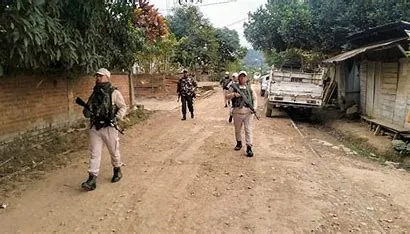In a move aimed at enhancing security, the government has reimposed the Protected Area Regime (PAR) in Manipur, Mizoram, and Nagaland, all of which share borders with Myanmar. This decision follows a 13-year gap and has reignited debates around its implications for both security and tourism in the region.
What is the Protected Area Regime (PAR)?
The Protected Area Regime (PAR), introduced through the Foreigners (Protected Areas) Order of 1958, restricts the entry of foreign nationals into specific border areas unless extraordinary reasons justify such visits. The reintroduction of PAR in these states is a response to concerns over the influx of illegal immigrants from Myanmar, which has been linked to ongoing violence and instability in the region.
Why Was PAR Reinforced After 13 Years?
The Manipur government and various Meitei civil society groups have raised alarms about the uncontrolled influx of illegal immigrants, particularly from Myanmar’s Chin community, which shares ethnic ties with the Kuki-Zomi and Mizo communities in India. They argue that this influx is a major factor in the conflict, which has caused over 258 deaths and displaced more than 60,000 people.
What Does the PAR Imposition Mean for the Northeast?
The PAR guidelines specify that certain areas in the Protected Areas are accessible to tourists with a permit, but for other reasons, prior permission from the Ministry of Home Affairs is required. This move has been criticized for its potential to limit the free movement of people, particularly in border regions that have long-standing cultural and ethnic connections with communities across the border.
Historical Context of PAR
Until 2011, the PAR applied to several border states, including Arunachal Pradesh, Sikkim, Manipur, Mizoram, and Nagaland. In 2010, the regime was relaxed for these three states to promote tourism. However, after the ongoing conflict and security concerns, the restrictions have been reinstated.
Impact on Myanmar’s Role in the Manipur Conflict
Myanmar’s Free Movement Regime (FMR) with India allowed tribes on both sides of the border to travel freely for short distances. However, amid escalating tensions, the Indian government canceled this regime in January 2024. This move, along with the reintroduction of the PAR, aims to control cross-border movement, which some argue contributes to the unrest in the region.
Experts Weigh In on the Decision
Former BSF, UP, and Assam police chief, Prakash Singh, has expressed concerns that the government is treating the issue primarily as a law-and-order problem, neglecting political solutions and confidence-building measures that could help address the root causes of the conflict.
Public Reaction to PAR Reintroduction
While Nagaland continues to advocate for tourism, as seen with the success of its recent Hornbill Festival, the reimposition of PAR is met with mixed reactions. Although some support the move for its security benefits, others fear it could hinder regional development and the freedom of cross-border communities.









